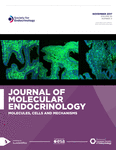Regulation of liver development: implications for liver biology across the lifespan
- 1Division of Pediatric Endocrinology, Rhode Island Hospital and Brown University, Providence, RI, USA
- 2Department of Molecular Biology, Cell Biology and Biochemistry, Brown University, Providence, RI, USA
- 3Department of Pathology and Laboratory Medicine, Brown University, Providence, RI, USA
- Correspondence should be addressed to P A Gruppuso; Email: Philip_Gruppuso{at}brown.edu
Abstract
The liver serves a spectrum of essential metabolic and synthetic functions that are required for the transition from fetal to postnatal life. Processes essential to the attainment of adequate liver mass and function during fetal life include cell lineage specification early in development, enzymic and other functional modes of differentiation throughout gestation, and ongoing cell proliferation to achieve adequate liver mass. Available data in laboratory rodents indicate that the signaling networks governing these processes in the fetus differ from those that can sustain liver function and mass in the adult. More specifically, fetal hepatocytes may develop independent of key mitogenic signaling pathways, including those involving the Erk mitogen-activated protein kinases MAPK1/3 and the mechanistic target of rapamycin (mTOR). In addition, the fetal liver is subject to environmental influences that, through epigenetic mechanisms, can have sustained effects on function and, by extension, contribute to the developmental origin of adult metabolic disease. Finally, the mitogen-independent phenotype of rat fetal hepatocytes in late gestation makes these cells suitable for cell-based therapy of liver injury. In the aggregate, studies on the mechanisms governing fetal liver development have implications not only for the perinatal metabolic transition but also for the prevention and treatment of liver disorders throughout the lifespan.
- Received 11 February 2016
- Accepted 16 February 2016
- Made available online as an Accepted Preprint 1 April 2016
- © 2016 Society for Endocrinology











